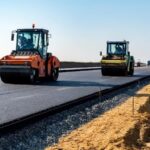Most fish and shrimp farms are heavily dependent on environmental conditions, especially the provision of clean water at a stable temperature, and this makes them especially vulnerable to the impacts of a changing climate.
The main climate stressors that affect aquaculture are temperature fluctuations, changes in rainfall patterns that cause floods or droughts, and increased storm variability and severity. Impacts differ, depending on the farmed species, the farm environment, the type of farming system and the geographical location. Impacts can occur in a very short time (i.e. heavy rainfall), while other are long-term trends, with change happening gradually over time.
Implement best management practices
“Improving management practices is the first move towards climate adaptation, especially improving biosecurity, considering lower stocking densities and ensuring a good farm location,” says Soto.
Implementing best management practices (BMPs) in all aspects of production will improve the overall resilience of the farm. Susceptibility to disease is particularly likely to increase with the changing climate, as the immune system of animals is compromised when they are stressed (from for example, by warmer water in and around the farm). Ensuring fish and shrimp health through the implementation of BMPs will reduce disease risks. Environmental measures that ensure the protecting of local ecosystems will also decrease the vulnerability of farms to climate change. BMPs also contribute to improved hygiene, feed efficiency and water quality.
Perform a risk-based analysis
During site selection and farm planning for a new farm, a risk-based analysis should be performed in relation to climate change and extreme weather events. This can also be done for existing operators who want to adapt their farm. An assessment needs to examine the climate risks of an area in terms of exposure, potential impacts, and the risk mitigation capacity. The ultimate goal of a risk assessment is to come up with recommendations for measures that reduce climate-related risks: so-called adaptation measures. Based on the risk assessment, a disaster preparedness plan can be developed, with the aim to monitor risk mitigation actions such as adaptation measures.
Diversify your production
Do not put all your eggs in one basket: diversification of products is a strategy commonly used to spread risks against losses. It can enable continued production if one crop fails. When selecting species that can benefit from each other, farm diversification also reduces waste and increases productivity by using byproducts from one species as inputs for other species. It also diversifies the income sources of farmers, stabilises production and increases resource efficiency.
However, as Soto observes: “Diversification only works if different species or products are not subject to the same hazard, for example extreme events such as the one that took place in Myanmar in 2023 can impact all aquaculture farming systems and species.”
The use of integrated agriculture-aquaculture and polyculture aquaculture systems should also be considered. This approach diversifies livelihoods further, provides extra food for the family and to sell, and uses scarce water more efficiently, making it an effective climate adaptation measure. Pond water can be used for the irrigation of crops, while crop waste can be used as feed for the fish. Nutrients in the pond water from fish excretion act as a natural fertiliser for the crops. Vegetation on pond dykes also strengthens them and reduces erosion.
- Ramadan: Multiple blessings for Yobe watermelon farmers
- Why FG launched taskforce, N1.6bn intervention for farmers
Make use of early warning systems
Farmers should be familiar with reliable sources of information on climate change and climate variability. Timely information can enable farmers to respond quicker to climate risks. It is important to understand and interpret the meteorological predictions, such as weather forecasts, well. Make use of forecasts to prepare for extreme weather events. Daily online weather forecasts provide information on upcoming extreme weather events, like cyclones and extreme high tides. When changes in salinity, water availability and other important parameters are predicted in advance, farmers can prepare their farm to minimise losses and damage.
Farm infrastructure improvement
For inland pond farms, higher and stronger dykes can protect against flooding and provide an opportunity to have deeper ponds in preparation for droughts and hot weather, since they have a more stable water temperature and a greater dissolved oxygen reserve.
Collaborate with other farmers
Most adaptation measures cannot be implemented by a single farmer alone. Therefore, farmer organisations and other community and government entities should play an important role in building resilient farms and communities. Farmers’ organisations allow for collective pooling of resources and skills. Other than implementing adaptation measures together (for example disease prevention), they can also work together on receiving training, exchanging information, understanding their ecosystem, infrastructure development, buying inputs and marketing of products.

 Join Daily Trust WhatsApp Community For Quick Access To News and Happenings Around You.
Join Daily Trust WhatsApp Community For Quick Access To News and Happenings Around You.


